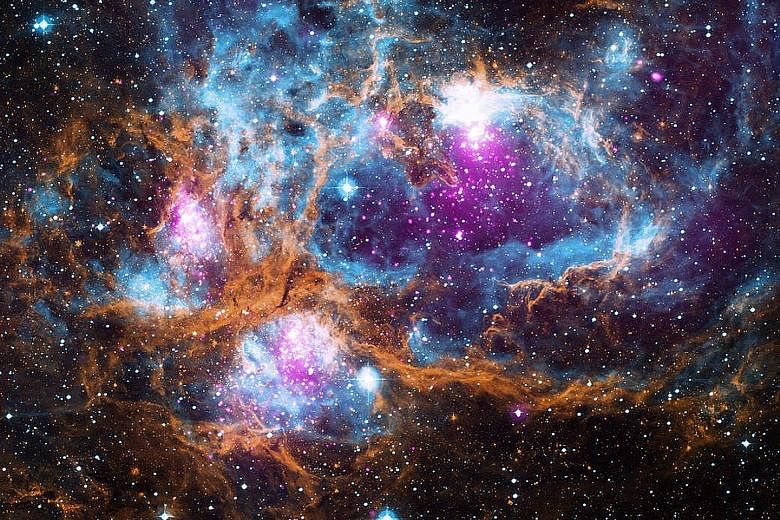This is a region called NGC 6357 where radiation from hot, young stars is energising the cooler gas in the cloud that surrounds them.
Located in a galaxy about 5,500 light years from Earth, NGC 6357 is a "cluster of clusters", containing at least three clusters of young stars, including many hot, massive and luminous ones.
This composite image contains X-ray data from Nasa's Chandra X-ray Observatory and the Rosat telescope (purple), infrared data from Nasa's Spitzer Space Telescope (orange) and optical data from the SuperCosmos Sky Survey (blue) made by the United Kingdom Infrared Telescope.
The X-rays from Chandra and Rosat reveal hundreds of point sources, which are the young stars in NGC 6357 and diffuse X-ray emission from the hot gas.
There are bubbles, or cavities, that have been created by radiation and material blowing away from the surfaces of massive stars, plus supernova explosions.
Astronomers call NGC 6357 and others like it "HII" (pronounced "H-two") regions.
A HII region is created when the radiation from hot, young stars strips away the electrons from neutral hydrogen atoms in the surrounding gas to form clouds of ionised hydrogen, which is denoted scientifically as "HII".

